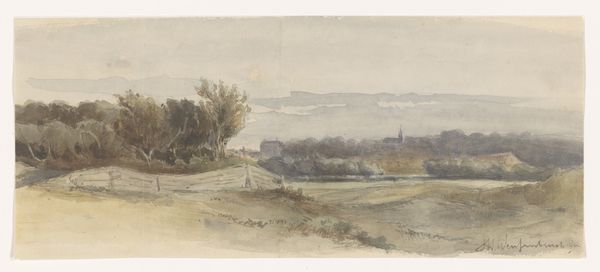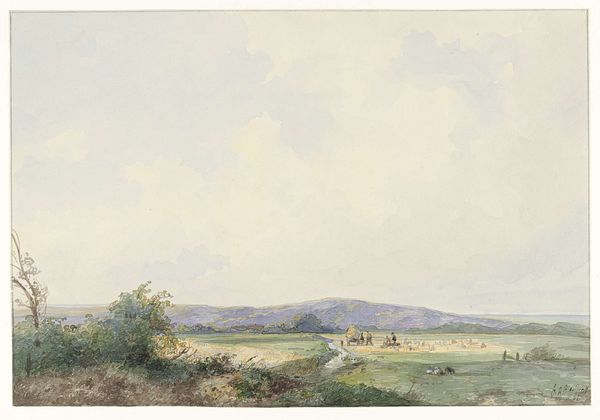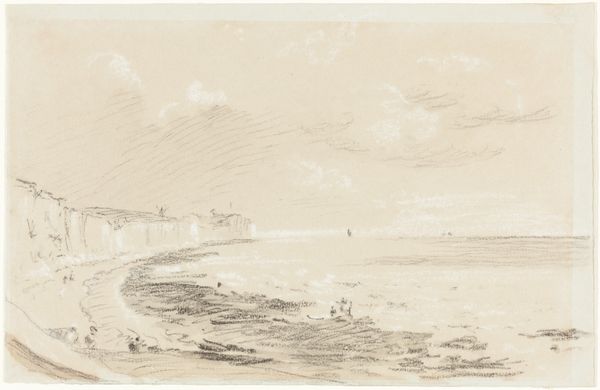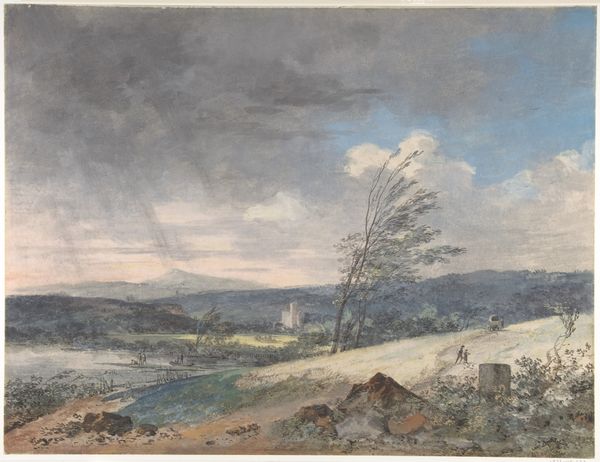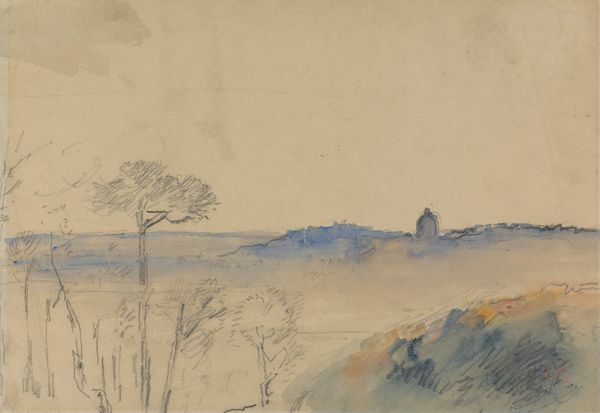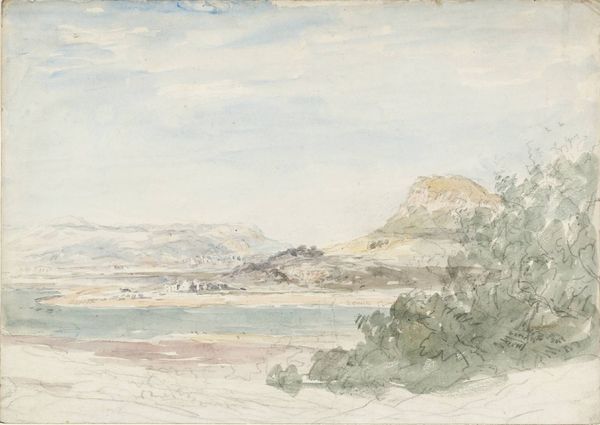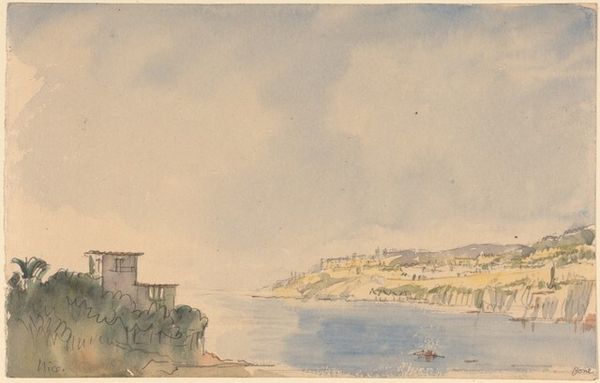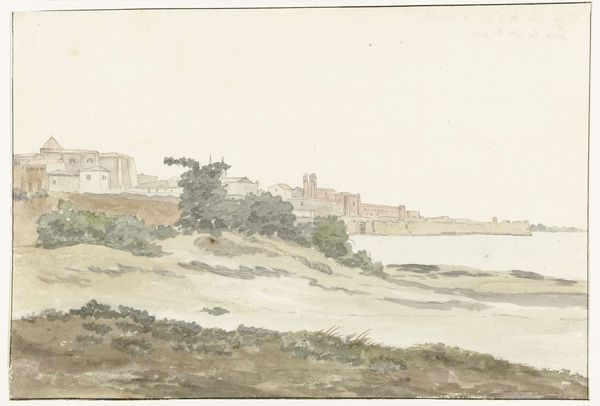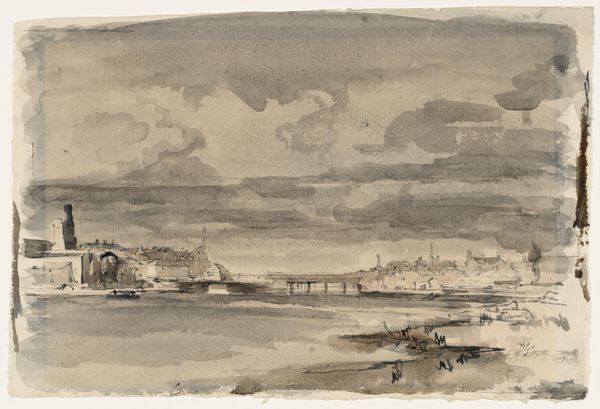
drawing, print, plein-air, watercolor
#
drawing
#
neoclacissism
# print
#
plein-air
#
landscape
#
watercolor
#
romanticism
#
cityscape
#
watercolour illustration
#
watercolor
Dimensions: sheet: 7 13/16 x 11 11/16 in. (19.8 x 29.7 cm)
Copyright: Public Domain
Curator: Here we have Conrad Martens’ watercolor and pencil drawing, “Approach to Montevideo, Uruguay,” dating from 1827 to 1837. Editor: Whoa, instant melancholy! Those looming clouds—you can almost feel the humidity. The whole scene is so muted and distant; it feels like peering through a veil of time. Curator: Martens was known for his landscapes capturing the vistas of South America and the Pacific. Interestingly, he joined Darwin on the HMS Beagle, replacing the previous artist, and this piece aligns with the Romantic and Neoclassical interests in both the grandeur and detailed study of nature. The original is currently exhibited in the Metropolitan Museum of Art. Editor: Replaced the artist, huh? I bet there's a story. Anyway, those domed buildings give it a distinctly European vibe dropped into a, shall we say, more wild setting. A subtle statement, perhaps, on colonialism’s imprint? It is just, quiet. Even that walled city sitting atop the hill almost blends into the landscape; this sense of transience amidst looming history and weather. Curator: Indeed. Martens was working within a historical context marked by evolving political and social dynamics in newly independent South America. Artists like Martens often found themselves navigating the expectations of European patrons while engaging with the realities of the locations they depicted. There is tension between a picturesque ideal and the gritty, humid truth of the landscape he's observing, very true. Editor: It's like he caught Montevideo holding its breath. As an artist, I appreciate how this watercolour resists overstatement and heroic depictions, instead hinting at the untold stories within this little-seen corner of the world. Curator: A poignant insight. It’s these layers of history and artistic intention, coupled with personal interpretations that make experiencing art so rewarding. Editor: Well said, it's why a journey into a good painting is a journey worth taking, huh?
Comments
No comments
Be the first to comment and join the conversation on the ultimate creative platform.
